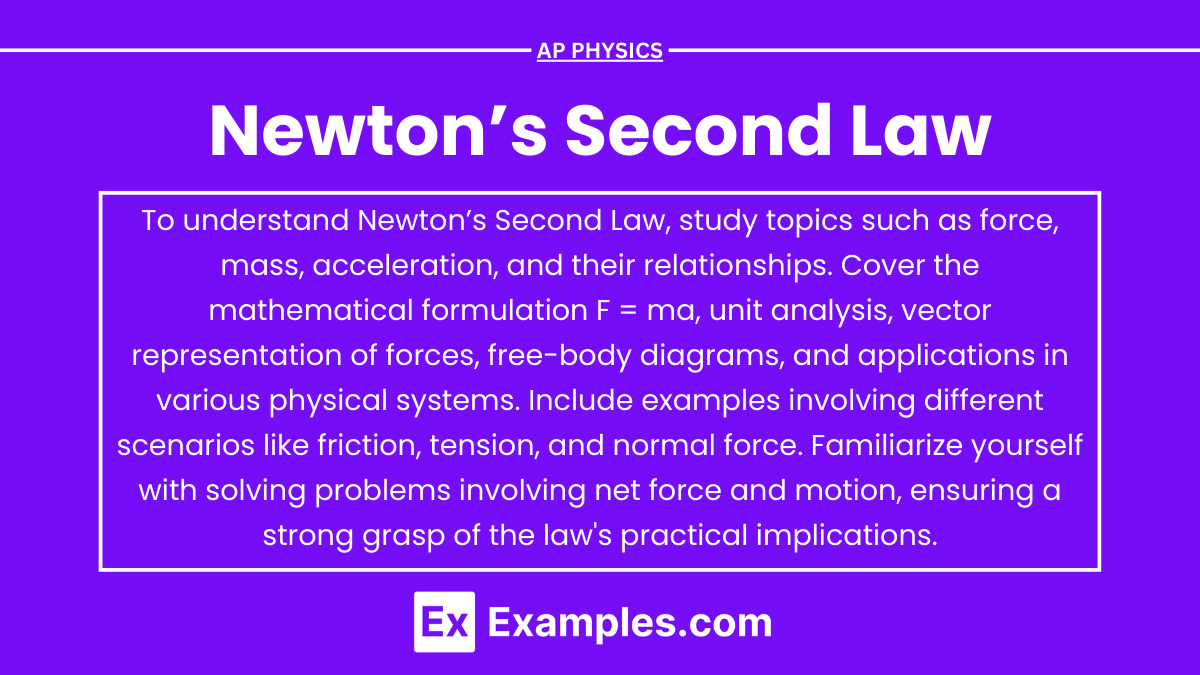Understanding Newton’s Second Law of Motion is crucial for mastering the principles of dynamics and achieving a high score on the AP Physics exam. This law explains the relationship between the net force acting on an object, its mass, and its acceleration. Below are detailed notes to help you excel in this topic.
Learning Objectives
In studying Newton’s Second Law for the AP Physics exam, you should learn how to describe the relationship between force, mass, and acceleration using the formula F = ma. Understand how to apply this law to solve problems involving motion, analyze forces in various contexts (including friction and tension), and interpret free-body diagrams. You should also grasp how to calculate net force and predict the resulting acceleration of objects, integrating these concepts into real-world and theoretical scenarios.
Definition of Newton’s Second Law
Newton’s Second Law of Motion: The acceleration of an object is directly proportional to the net force acting on it and inversely proportional to its mass. Mathematically, it is expressed as:
Fₙₑₜ = mₐ
where:
- Fₙₑₜ is the net force acting on the object (in newtons, N),
- m is the mass of the object (in kilograms, kg),
- a is the acceleration of the object (in meters per second squared, m/s²).
Key Concepts
Net Force
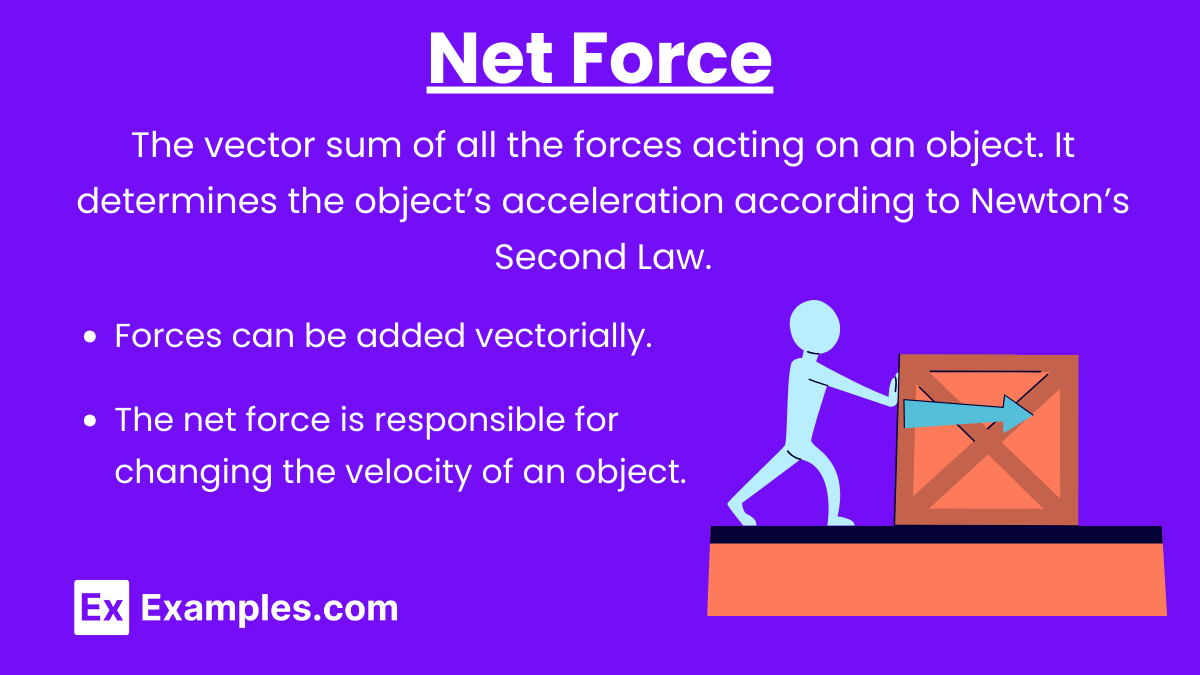
Net Force (Fₙₑₜ): The vector sum of all the forces acting on an object. It determines the object’s acceleration according to Newton’s Second Law.
Key Points:
- Forces can be added vectorially.
- The net force is responsible for changing the velocity of an object.
Mass
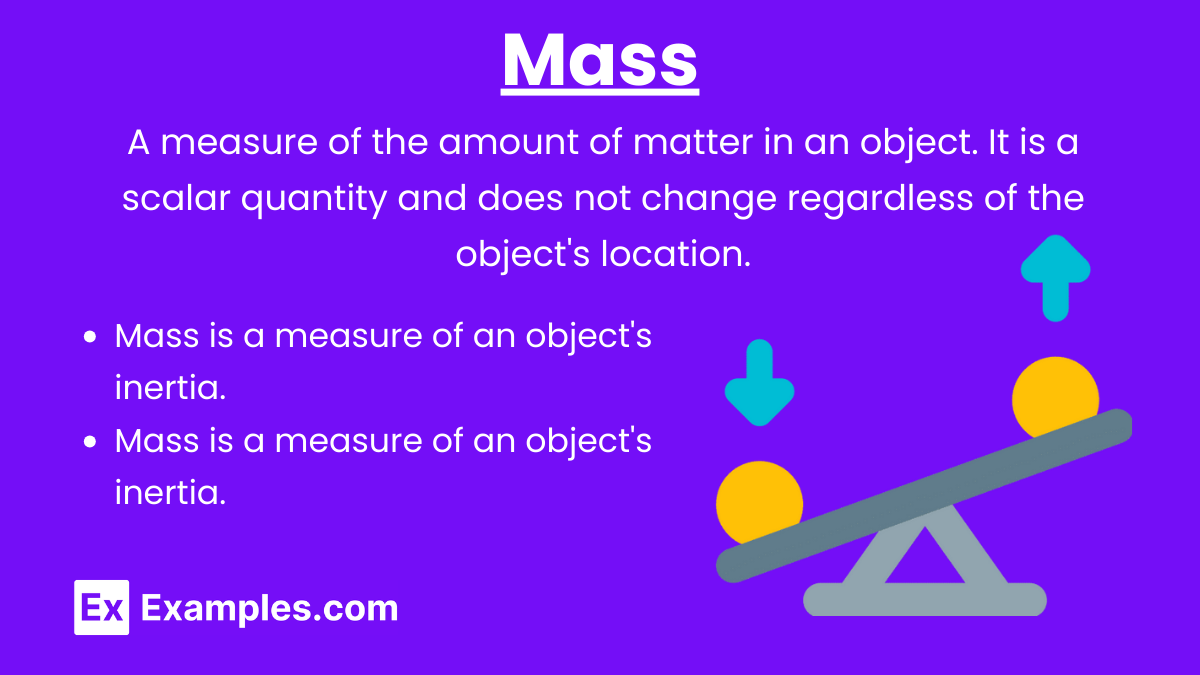
Mass (m): A measure of the amount of matter in an object. It is a scalar quantity and does not change regardless of the object’s location.
Key Points:
- Mass is a measure of an object’s inertia.
- More mass means more resistance to changes in motion.
Acceleration
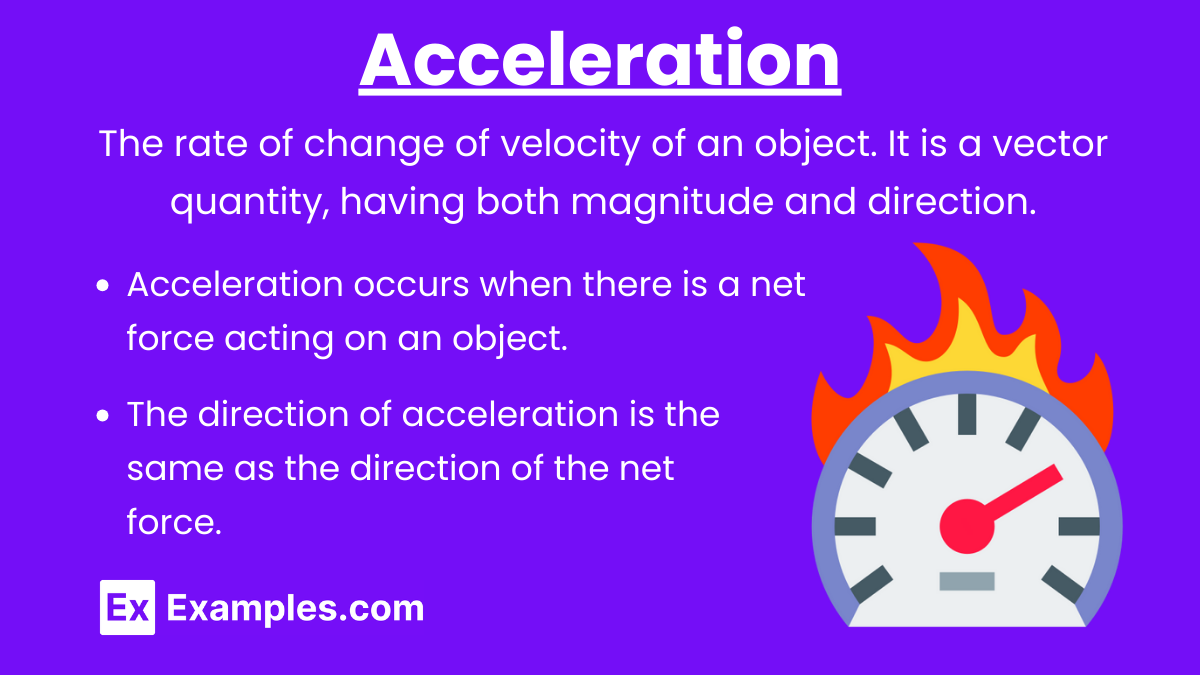
Acceleration (a): The rate of change of velocity of an object. It is a vector quantity, having both magnitude and direction.
Key Points:
- Acceleration occurs when there is a net force acting on an object.
- The direction of acceleration is the same as the direction of the net force.
Applications of Newton’s Second Law
Calculating Acceleration
Given the net force and mass, you can calculate the acceleration using:
![]()
Determining Net Force
If you know the mass and acceleration of an object, you can find the net force using:
Fₙₑₜ = mₐ
Examples
- Pushing a Cart:
If you push a 10 kg cart with a force of 20 N, the acceleration is:![Rendered by QuickLaTeX.com \[ a = \frac{F_{\text{net}}}{m} = \frac{20 \, \text{N}}{10 \, \text{kg}} = 2 \, \text{m/s}^2 \]](https://www.examples.com/wp-content/ql-cache/quicklatex.com-c220230fe299172557b69439a0479d87_l3.png)
- Falling Object:
A 5 kg object in free fall experiences a gravitational force of Fg = mg.
Fg = 5kg×9.8m/s² = 49N
Friction and Tension
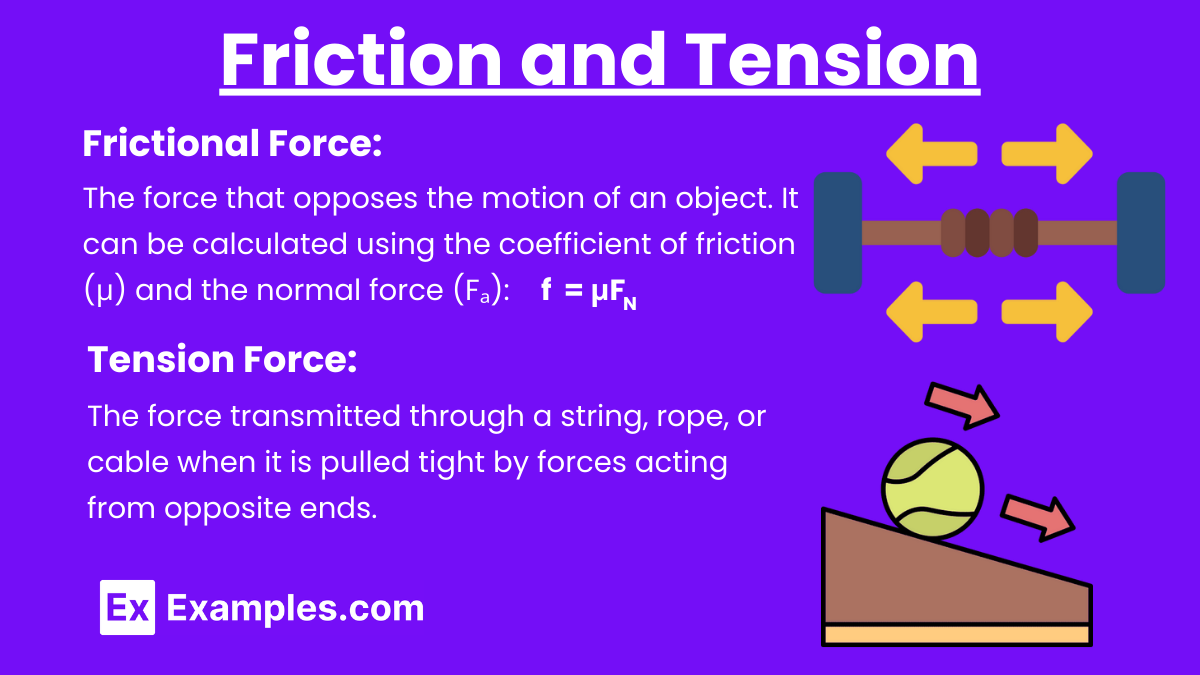
Frictional Force: The force that opposes the motion of an object. It can be calculated using the coefficient of friction (μ) and the normal force (Fₐ):
![]()
Tension Force: The force transmitted through a string, rope, or cable when it is pulled tight by forces acting from opposite ends.
Examples
Example 1: Sliding Box with Friction
Scenario: A 15 kg box is sliding on a horizontal surface with a kinetic friction coefficient of 0.3. If a horizontal force of 50 N is applied, determine the box’s acceleration.
Calculations:
- Normal force:
![Rendered by QuickLaTeX.com \[ F_N = mg = 15 \, \text{kg} \times 9.8 \, \text{m/s}^2 = 147 \, \text{N} \]](https://www.examples.com/wp-content/ql-cache/quicklatex.com-0b33c0f3873e0ce54764862e63e74319_l3.png)
- Frictional force:
![Rendered by QuickLaTeX.com \[ f_k = \mu_k F_N = 0.3 \times 147 \, \text{N} = 44.1 \, \text{N} \]](https://www.examples.com/wp-content/ql-cache/quicklatex.com-b8c443150b077d235bc8ede1b665b532_l3.png)
- Net force: Fₙₑₜ = 50N−44.1N = 5.9N
- Acceleration:
![Rendered by QuickLaTeX.com \[ a = \frac{F_{\text{net}}}{m} = \frac{5.9 \, \text{N}}{15 \, \text{kg}} \approx 0.39 \, \text{m/s}^2 \]](https://www.examples.com/wp-content/ql-cache/quicklatex.com-491e438a8be0ab16be46b3b1b1295c6e_l3.png)
Example 2: Tug of War
Scenario: Two teams are playing tug of war, with team A pulling with a force of 500 N and team B pulling with a force of 450 N. The rope has a mass of 5 kg. Determine the acceleration of the rope.
Calculations:
- Net force: Fₙₑₜ = 500N−450N = 50N
- Acceleration:
![Rendered by QuickLaTeX.com \[ a = \frac{F_{\text{net}}}{m} = \frac{50 \, \text{N}}{5 \, \text{kg}} = 10 \, \text{m/s}^2 \]](https://www.examples.com/wp-content/ql-cache/quicklatex.com-f82182ab3a5ef5c000b3bc3163bd0074_l3.png)
Example 3: Car on an Incline
Scenario: A car of mass 1000 kg is accelerating up a hill inclined at 30° with an applied force of 4000 N. The frictional force opposing the motion is 500 N. Determine the car’s acceleration.
Calculations:
- Gravitational force component parallel to the incline:
![Rendered by QuickLaTeX.com \[ F_{g\parallel} = mg \sin \theta = 1000 \, \text{kg} \times 9.8 \, \text{m/s}^2 \times \sin 30^\circ = 4900 \, \text{N} \]](https://www.examples.com/wp-content/ql-cache/quicklatex.com-62ac5952060d61d91e076079c5f61c85_l3.png)
- Net force: Fₙₑₜ = 4000N−500N−4900N = −1400N
- Acceleration:
![Rendered by QuickLaTeX.com \[ a = \frac{F_{\text{net}}}{m} = \frac{-1400 \, \text{N}}{1000 \, \text{kg}} = -1.4 \, \text{m/s}^2 \]](https://www.examples.com/wp-content/ql-cache/quicklatex.com-ab0607a61b9c30a3ee688c5e971c2b2e_l3.png)
- (The negative sign indicates acceleration down the incline)

